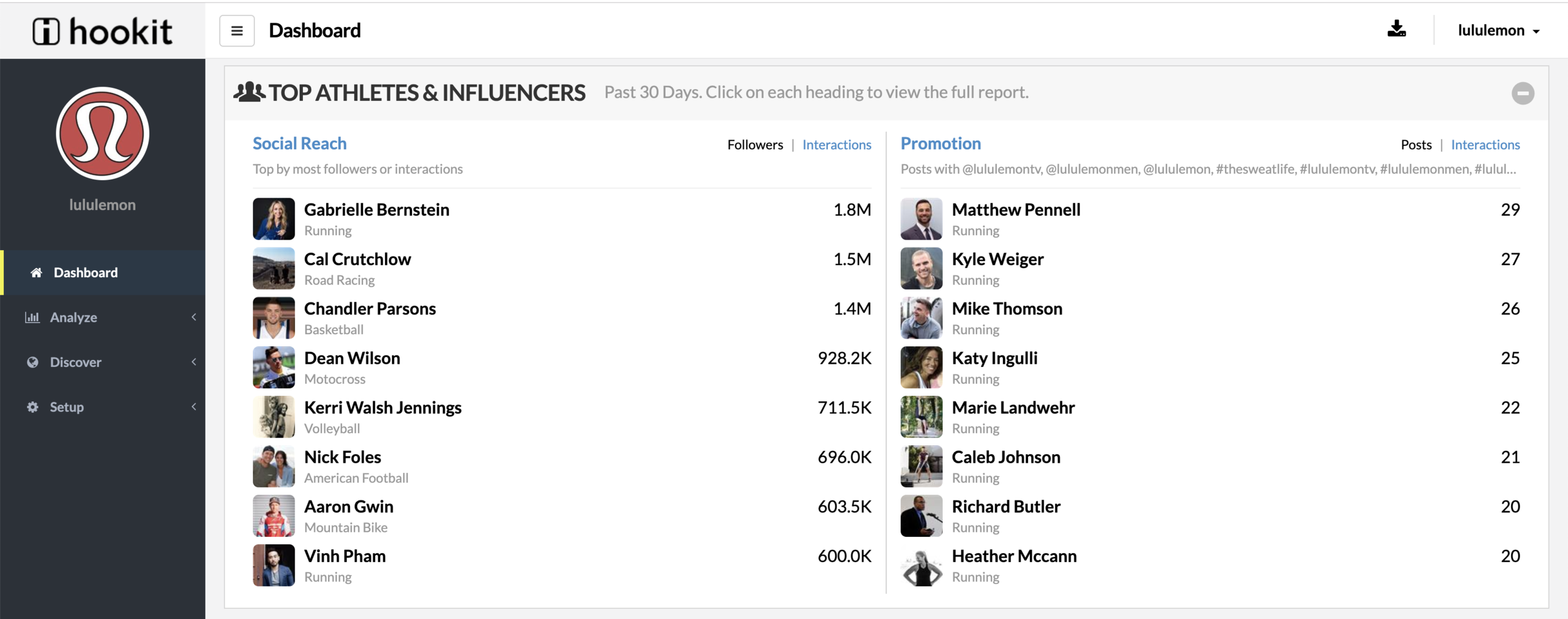Hookit Brand Account Dashboard
The Overview
The Brand Account is a tool designed for brands to track social media metrics and ROI on their sponsored and watched partners. The old Brand Account dashboard didn’t tell brands the complete story of how their athletes are doing at a glance. One of the main goals of redesigning the Brand Account was to give brands an overview of their partners’ performance.
The Process
Internal Stakeholder Interviews
I individually spoke to the CEO, CPO, CRO, and client success manager to better understand the business and customer needs. On the business side, there was a resounding agreement to provide deeper actionable insights and a stronger focus on these Hookit metrics: Promotional Effectiveness, Adjusted Ad Value, Max Ad Value, and Promotion Quality.
I wasn’t allowed access to users for this particular feature so I worked closely with the client success team and business analysts to gain insight into user needs. After sifting through the customer requests, I found that the common theme is that users need a dashboard that summarized the brand’s top metrics and athletes' performance on one page. The old dashboard was too focused on event campaigns and it did not give users the “at a glimpse” view.
Hookit’s old dashboard:
Team Sketches
After gaining insight into the business and user needs, I held a Crazy 8’s sketching activity with the CPO, product and engineering team, client success team, and data team. Each team had unique insights into what the users need and how we can meet those needs given the data.
I asked my colleagues to specifically focus on ways to visualize logo and text promotion and the relationship between Max Ad Value, Promotion Quality, and Adjusted Ad Value.
Prototype and Test Charts
We generated many great ideas during our sketching session. However, I wanted to test out some of the different chart types because I felt like some charts worked better over others depending on the data set. I was particularly curious about the following chart types:
Stacked bar chart vs an unstacked bar chart.
Double y-axis chart vs double x-axis chart.
I quickly made some chart prototypes with real data using Tableau to visualize a brand’s post trends. I uploaded the graphs into two separate Optimal Workshop surveys. One survey tested the stacked bars and duo x-axis chart. The second survey tested the unstacked bars and double y-axis chart.
There happened to be 6 customers visiting the office one day and I was able to snag a few minutes with each customer. I observed and timed the participants individually as they completed each task.
Preview Test Version 1
Preview Test Version 2
















